

27th August 2025 (18 Topics)
Mains Issues
Context:
The Ministry of Tribal Affairs has launched the Adi Karmayogi initiative under the Dharti Aba Janjatiya Gram Utkarsh Abhiyaan, aiming to create a cadre of 20 lakh trained “change leaders” in tribal villages to ensure effective last-mile scheme delivery.
Objective
- To adopt a participatory, motivation-based approach for solving challenges in tribal areas.
- To strengthen delivery of welfare schemes by enhancing motivation of officials and community leaders, not just creating new schemes.
Prescribed Activities for Training
- “Lighting the candle” exercise: focus on solutions instead of problems.
- “Fish bowl” exercise: community bonding through participatory methods.
- “Village scenario role play”: problem-solving through collective imagination (e.g., water scarcity solutions).
Vision Document (Village Vision 2030)
- Each target village (? 1 lakh villages across 550+ districts) to prepare its own development vision, depicted as public murals.
- These act as aspirational blueprints for government planning.
Adi SevaKendras
- Plan to set up 1 lakh Adi SevaKendras as single-window service centres for welfare schemes to ensure 100% saturation coverage.
Strengths
- Behavioural Governance Approach: Focus on motivation, initiative, and participatory problem-solving rather than bureaucratic dependency.
- Community Ownership: “Village Vision 2030” encourages grassroots involvement and bottom-up planning.
- Capacity Building: Layered training model ensures wide outreach across administrative and community levels.
- Improved Last-Mile Delivery: Adi SevaKendras can address accessibility issues and reduce leakages.
Challenges
- Implementation Bottlenecks: Ensuring uniform quality of training across States and districts.
- Resource Constraints: Funding and administrative support required for large-scale training and Adi SevaKendras.
- Cultural Sensitivity: Training exercises must align with tribal customs and traditions to avoid alienation.
- Sustainability: Risk of initiative being reduced to a one-time campaign without long-term monitoring.
Way Forward
- Institutionalise Training: Integrate motivation-based modules into existing administrative training academies (like ATI/CTI).
- Strengthen Monitoring: Develop measurable indicators (e.g., % of scheme saturation, decline in grievance redressal delays).
- Community Leadership Development: Promote inclusion of tribal women and youth leaders as key change agents.
- Digital Integration: Use digital platforms for follow-up training and tracking village-level “Vision 2030” outcomes.
|
Other Initiatives for tribal development: Dharti Aba Janjatiya Gram Utkarsh Abhiyaan
Tribal Affairs Ministry – Core Schemes
|


Mains Issues
Context:
The Government of India has launched PoshanBhiPadhaiBhi and related initiatives to transform Anganwadi Centres into hubs of Early Childhood Care and Education (ECCE) in alignment with the NEP 2020.
Early Childhood Care and Education (ECCE)
- Defined as education and care for children aged 0–6 years.
- The National Education Policy (NEP) 2020recognises that 85% of brain development occurs before the age of 6.
- Formal school entry age has been revised to 6 years, making ECCE crucial for school readiness.
Key Government Initiatives
- PoshanBhiPadhaiBhi (2023):
- Integrates nutrition with play-based learning.
- Transforms Anganwadi Centres into early learning hubs.
- Focus on activity-based and indigenous material-based learning.
- Monthly ECCE days institutionalised.
- Aadharshila (National ECCE Curriculum Framework for 3–6 years):
- Structured 5+1 weekly plan.
- Emphasis on free play, structured activities, outdoor play, nutrition, and rest.
- Focuses on holistic development (intellectual, emotional, social, and physical).
- Navchetna (National Framework for Early Childhood Stimulation for 0–3 years):
- Encourages parental and caregiver involvement.
- Provides age-appropriate, play-based activities at home.
- Aims at bridging socio-economic gaps in early learning opportunities.
Scientific and Economic Rationale
- Studies (CMC Vellore) show structured ECCE leads to IQ gains of 19 points by age five.
- Nobel laureate James Heckman’s research: Early childhood investments yield 13–18% economic returns.
- Aligns with global best practices linking ECCE to long-term productivity, social skills, and economic growth.
Institutional Framework
- Ministry of Women and Child Development is the nodal body.
- Anganwadis function under Integrated Child Development Services (ICDS)
- ECCE is a part of Sustainable Development Goal (SDG) 4.2: access to quality early childhood development and pre-primary education.
Impact of ECCE Initiatives
- Shift in perception of Anganwadi centres (from nutrition-only to first school)
- Scientific outcomes: higher IQ, improved school readiness
- Social outcomes: parental trust, equitable opportunities for poor households
- Economic outcomes: high returns on early investments, contribution to human capital
Challenges and Way Forward
- Training and capacity building of Anganwadi workers
- Infrastructure and resource allocation
- Monitoring and quality assurance of ECCE delivery
- Need for convergence between MWCD and Ministry of Education

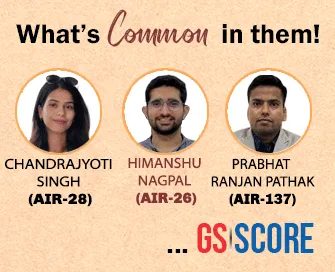
Mains Issues
Context:
India has crossed 56.75 lakh registered EVs by February 2025, marking record adoption under flagship schemes like FAME-II, PM E-Drive, PLI, and PM e-Bus Sewa.
Policy Push for Electric Mobility
- National Electric Mobility Mission Plan (NEMMP 2020): Laid the foundation for EV adoption.
- FAME-I (2015–2019): Supported 2.55 lakh EVs and approved 520 charging stations.
- FAME-II (2019 onwards): With ?11,500 crore budget, supported over 16.29 lakh EVs and sanctioned 9,332 charging stations (8,885 installed by June 2025).
Major Flagship Schemes
- PLI-Auto (2021): ?25,938 crore outlay; attracted ?29,576 crore investment; created 44,987 jobs; requires 50% domestic value addition.
- PLI-ACC Battery Storage (2021): ?18,100 crore outlay; awarded 40 GWh capacity; 25–60% domestic value addition mandate.
- PM E-Drive (2024–28): ?10,900 crore outlay; subsidised 24.79 lakh e-2Ws, 3.15 lakh e-3Ws, 5,643 e-trucks, 14,028 e-buses, and e-ambulances.
Electric Buses and Public Transport
- PM e-Bus Sewa (2023): ?20,000 crore budget; target 10,000 e-buses; 7,293 approved by Aug 2025.
- PM e-Bus PSM (2024): ?3,435 crore outlay; supports 38,000 buses over 12 years with payment security mechanism.
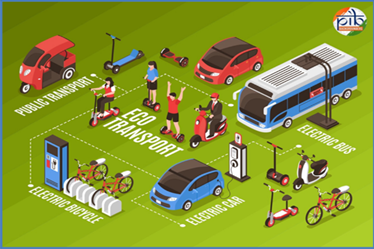
Industrial Transformation
- Made in India EVs: Launch of Suzuki’s e-VITARA and localized hybrid battery electrode production.
- Global Hub Vision: India positioned as Suzuki’s export base for over 100 countries.
- SPMEPCI (2024): Incentivizes global automakers; requires ?4,150 crore investment and phased domestic value addition (25–50%).
Milestones and Targets
- EV Registration:75 lakh EVs (Feb 2025).
- Sales:49 lakh e-2Ws sold in FY 2024–25 (21% increase over previous year).
- Targets: 30% EV penetration by 2030; reduce carbon emissions by 1 billion tonnes; cut carbon intensity by 45% by 2030; net-zero by 2070.
- India Electric Mobility Index (IEMI, 2025): Assesses progress across states; Delhi, Maharashtra, Chandigarh lead as frontrunners.

Achievements
- Strong policy ecosystem with multi-dimensional schemes (FAME, PLI, PM e-Bus Sewa).
- Rapid expansion of charging infrastructure (8,885 PCS installed by June 2025).
- Localization drive with >80% battery value manufactured in India.
- Significant employment generation and rise in women workforce participation in EV manufacturing.
Challenges
- High upfront costs of EVs compared to ICE vehicles.
- Battery supply chain dependence on imports for lithium, cobalt, and nickel.
- Charging ecosystem gaps in rural and semi-urban areas.
- Financial viability concerns for bus operators despite government support.
Way Forward
- Strengthening Supply Chains: Secure raw materials through international partnerships (e.g., Australia, Africa, Latin America).
- Affordable Financing Models: Incentivize banks and NBFCs for EV loans with lower interest rates.
- Grid Modernization: Integrate renewable energy with EV charging infrastructure.
- Technology & R&D Support: Encourage indigenous innovation in solid-state batteries and hydrogen fuel cells.
- Urban-Rural Balance: Expand EV incentives and infrastructure to smaller cities and rural areas.


Mains Issues
Context:
Heavy monsoon rains have triggered flash floods, landslides, and infrastructural damage across Jammu & Kashmir, Himachal Pradesh, Punjab, and Chhattisgarh, leading to significant loss of life and property.
Causes of Current Situation
- Excess Rainfall & Cloudbursts: Torrential rainfall in short spans caused rivers such as the Beas in Himachal and Tawi in Jammu to overflow.
- Geological Vulnerability: Himalayan terrain (steep slopes, young fold mountains, loose sediments) is prone to landslides.
- Urbanisation& Road Construction: Encroachments on riverbeds, deforestation, and haphazard road expansion increase vulnerability.
- Climate Change Impact: Increased frequency of extreme rainfall events, a noted trend in IMD reports and IPCC assessments.
Impact
- Human Losses: Multiple deaths reported, including pilgrims on the Vaishno Devi route in Jammu.
- Infrastructure Damage: Collapse of bridges, washing away of highways (e.g., Chandigarh–Manali highway), suspension of schools in Punjab.
- Economic Disruptions: Crops, tourism, and connectivity severely hit; red alert issued in Himachal Pradesh (690 roads blocked).
Institutional Mechanisms for Management
- National Disaster Management Authority (NDMA): Apex body for disaster risk reduction.
- State Disaster Response Force (SDRF) & NDRF: Active in rescue operations.
- Forecasting Agencies: IMD issues heavy rainfall warnings; Central Water Commission (CWC) monitors flood levels.
- Mitigation Programmes: National Landslide Risk Management Strategy (MoEFCC), National Flood Management Programme.
Challenges in Disaster Management
- Lack of early warning dissemination at village level.
- Weak enforcement of building and slope-stabilisation codes.
- Poor coordination between agencies.
- Vulnerable groups (children, pilgrims, farmers) disproportionately affected.
Way Forward
- Scientific Planning:
- Restrict construction in ecologically fragile zones.
- Implement National Landslide Risk Management Strategy
- Infrastructure Resilience:
- Flood-resistant designs, eco-sensitive road construction.
- Nature-based solutions like catchment restoration and afforestation.
- Strengthening Forecasting:
- Hyper-local weather forecasting using AI, satellites, Doppler radars.
- Community Preparedness:
- Local disaster response teams; awareness campaigns.
- Integration of traditional knowledge in hazard mitigation.
- Policy Measures:
- Climate-resilient development planning under SDG-13 (Climate Action).
- Mainstreaming disaster risk reduction in all development programmes.


Prelims Articles
Context:
NCLAT member claims he was approached by judge for favour, recuses himself
Constitutional and Legal Basis
- No explicit provision in the Constitution for judicial recusal.
- However, derives strength from:
- Article 14 (Right to Equality before law): ensures fairness in adjudication.
- Article 21 (Right to life and personal liberty): includes fair trial as part of due process.
- Oath of Judges (Third Schedule): to perform duties “without fear or favour, affection or ill-will.”
Judicial Precedents:
- Ranjit Thakur v Union of India (1987): Test of bias is “reasonableness of apprehension in the mind of the party.”
- Supreme Court Advocates-on-Record Association v Union of India (2015): Pecuniary interest = automatic recusal.
- Subrata Roy Sahara v Union of India (2014): SC observed that recusal cannot be forced; rests on conscience of the judge.
- Veeraswami v Union of India (1991): Judges are accountable but must be protected against motivated allegations.
International Practices
- United States:
- Judicial Code of Conduct requires recusal in cases of personal bias, financial interest, or prior involvement.
- However, Supreme Court Justices themselves decide on recusal, similar to India.
- United Kingdom:
- Governed by the “real danger of bias” test (Porter v Magill, 2001).
- Strong emphasis on “appearance of justice.”
- European Court of Human Rights (ECHR):
- Principle of “objective impartiality” — even the perception of bias can vitiate fairness.
Concerns and Criticisms
- Threat to Judicial Independence: Litigants may misuse recusal requests to bench-shop.
- Delays in Justice: Frequent recusals derail hearings in constitutional and high-profile cases.
- Lack of Codified Rules: Leads to inconsistency; each judge exercises discretion differently.
- Transparency Issue: Judges sometimes do not record reasons for recusal, creating opacity.
Reform Proposals
- Codification of Recusal Norms
- Adoption of Judicial Standards and Accountability Bill (2010)-like provisions.
- A formal code of conduct, laying down objective grounds for recusal.
- Mandatory Disclosure of Reasons
- To prevent misuse and maintain transparency.
- Independent Scrutiny
- In sensitive constitutional cases, recusal requests could be decided by a larger bench rather than the concerned judge alone.
- Judicial Training & Sensitization
- On conflict-of-interest scenarios, especially in the age of corporate litigation and digital transparency.

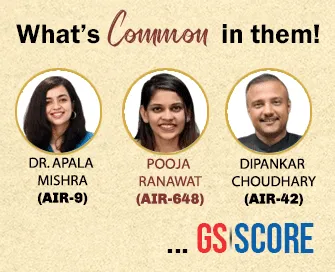
Prelims Articles
Context:
The Supreme Court questioned whether a Governor’s delay in granting assent to State Bills under Article 200 is open to judicial review, similar to the review allowed in cases of President’s Rule under Article 356.
Constitutional Provisions
- Article 200: Governor may
- Give assent to a Bill,
- Withhold assent,
- Return the Bill (if not a Money Bill) for reconsideration, or
- Reserve it for the consideration of the President.
- Article 356: President’s Rule based on Governor’s report regarding the failure of constitutional machinery in the State.
Judicial Review
- In R. Bommai v. Union of India (1994), the Supreme Court held that the proclamation of President’s Rule under Article 356 is subject to judicial review to check mala fide or extraneous reasons.
- The Court is now considering whether delays by Governors under Article 200 can also be subjected to judicial scrutiny.
Recent Context
- Triggered by Tamil Nadu’s petition against its Governor sitting on Bills since 2020.
- A two-judge Bench earlier prescribed a three-month timeline for Governors and the President to act on Bills.
- A Presidential Reference Bench is now examining the scope of judicial intervention.
Debate on Separation of Powers
- Centre and several States argue that the Governor’s legislative functions are not subject to judicial deadlines.
- Judiciary stresses that indefinite delay undermines federalism and legislative functioning.
- B.R. Ambedkar had clarified that both Union and States must function within their constitutional domains, barring emergencies.

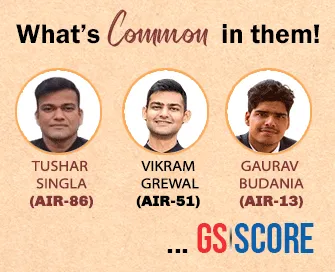
Prelims Articles
Context:
The 80th Round of the National Sample Survey has revealed that students in private schools spend nearly nine times more than those in government schools, with one-third opting for private coaching.
Survey Background
- Conducted under the Comprehensive Modular Survey (Education), part of the 80th round of NSSO (2025).
- Covered 52,085 households and 57,742 students through computer-assisted personal interviews.
- Aim: To estimate average household expenditure on school education and private coaching.
Key Findings
- Government schools: Average annual expenditure per student = ?2,863.
- Private/non-government schools: Average annual expenditure per student = ?25,002 (? 9 times higher).
- Private coaching: 27% students nationally (urban: 30.7%; rural: 25.5%).
- Enrolment pattern:
- Govt.schools: 55.9% (66% rural; 30.1% urban).
- Private unaided schools:9% (higher in urban areas).
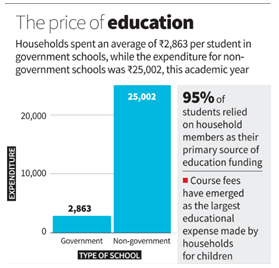
Expenditure Break-up
- Largest component: Course fees (?7,111 on average).
- Textbooks and stationery (?2,002).
- Urban vs Rural: Course fees = ?15,143 (urban) vs ?3,979 (rural).
Funding Sources
- 95% students rely on household members for education funding.
- Only 2% reported government scholarships as the main funding source.
Policy Implications
- High inequality between government and private schooling costs.
- Growing privatisation and dependence on coaching raises concerns about equity and access.
- Low scholarship coverage indicates the need to strengthen targeted welfare schemes under Right to Education Act (2009).
- Urban-rural divide underscores need for investment in rural educational infrastructure.

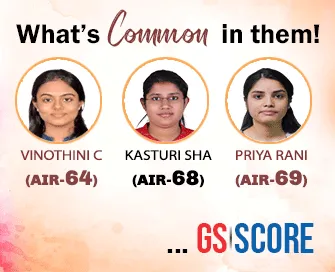
Prelims Articles
Context:
India and the United States held the 2+2 Dialogue to discuss energy security, defence cooperation, and trade frictions, amid tensions over tariffs and Russian oil imports.
About the 2+2 Dialogue
- The 2+2 Ministerial Dialogue is the highest-level institutional mechanism between India and the US.
- It involves External Affairs Minister (EAM) and Defence Minister from India, and Secretary of State and Secretary of Defence from the US.
- First held in 2018, it reflects the strategic depth of India–US relations.
Major Focus Areas in the Dialogue
- Energy Security: Addressing implications of Russian oil imports, diversification of energy sources, and transition to clean energy.
- Defence Cooperation: Strengthening military-to-military ties, maritime domain awareness, defence technology sharing.
- Indo-Pacific Strategy: Ensuring a free, open, and rules-based order in the Indo-Pacific, aligned with QUAD principles.
- Trade and Tariffs: Discussion on market access, tariffs, and technology transfers.
- Regional Security Issues: Developments in Ukraine, Indo-Pacific tensions, and counterterrorism.
Strategic Significance
- Builds on the India–US Major Defence Partnership (2016, designated by the US Congress).
- Advances cooperation in critical and emerging technologies (AI, quantum computing, space, semiconductors).
- Reinforces alignment in regional security architecture with QUAD (India, US, Japan, Australia).


Prelims Articles
Context:
The U.S. has imposed a 50% tariff on select Indian exports, effective from August 27, 2025, severely affecting low-margin sectors like textiles, gems, and jewellery.
Tariff Details:
- The U.S. has imposed a 50% tariff on 20% of India’s merchandise exports, including textiles, apparel, gems, jewellery, carpets, furniture, and shrimps.
- This follows a prior 25% tariff announced in July 2025, with the additional 25% acting as a “penalty” linked to New Delhi’s purchases of Russian oil and other imports from Moscow.
Impact on Indian Exports:
- Exports to the U.S. from India could decline by 40–45% in FY26 compared to FY25.
- Key affected sectors by value include textiles and apparel ($10.9 bn), gems, gold, and jewellery ($10 bn), machinery and mechanical appliances ($6.7 bn), and agriculture/meat/processed food ($6 bn).
- Sectors like pharmaceuticals, electronics, and petroleum remain exempt. Auto parts (4% of exports) face a 25% tariff.
Geographical and Sectoral Effects:
- Textiles:Tiruppur, Ludhiana, Jaipur, Noida–Gurugram clusters; major buyers may shift to Bangladesh, Vietnam, Mexico, and Costa Rica.
- Gems and jewellery: Surat, Mumbai, Jaipur; competitors include Israel, Belgium, China, and Mexico.
- Carpets:Bhadohi, Mirzapur, and Srinagar; potential gainers include Turkey, Pakistan, and Nepal.
- Handicrafts: Jodhpur, Jaipur, Moradabad; potential gainers include Vietnam, China, Turkey, and Mexico.
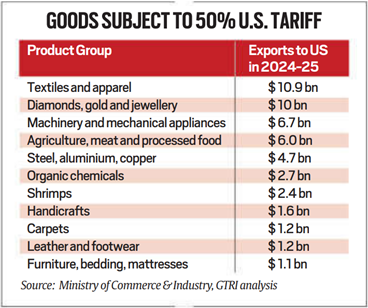
Economic Implications:
- Low-skilled jobs in affected sectors face jeopardy, with estimates of nearly 30% of U.S.-bound exports at risk.
- The tariffs may make Indian exports uncompetitive, leading to shifts in global supply chains.
- Crisis ratings and economic predictions indicate reduced revenues and employment in export-oriented sectors.
Global Trade Dynamics:
- S. competitors like Vietnam, Bangladesh, and China could benefit from the shift.
- Tariff strategy reflects geopolitical and economic leverage, influencing India-U.S. trade negotiations.


Prelims Articles
Context:
The Central government has withdrawn the 11% import duty on cotton till September 30, 2025, to address raw material shortages in the textile industry.
Cotton in India
- India: Largest cotton producer globally.
- Cultivation: Nearly 6 million farmers
- Major cotton-growing states: Gujarat, Maharashtra, Telangana, Karnataka, Andhra Pradesh, Punjab.
- India is a leading exporter and importer of cotton simultaneously.
Import Duty on Cotton
- Introduced:Union Budget 2021, when production (350 lakh bales) exceeded domestic requirement (335 lakh bales).
- Aim: Protect farmers by discouraging cheaper imports.
- Withdrawals: Temporarily suspended earlier (April–Oct 2022), now extended again till September 30, 2025.
Implications of Duty Removal
- For textile industry/exporters:
- Level playing field in global market as raw material costs decline.
- Helps especially MSME garment units.
- For farmers:
- Discourages cultivation, as import competition suppresses domestic prices.
- Farmers’ unions (e.g., SamyuktaKisanMorcha) opposed the move.
- For policy:
- Highlights conflict between farmer protection and industry competitiveness.
Long-term Solutions Proposed
- Stable cotton import/export policy for industry.
- Seasonal duty structure: Exempt duty during non-peak season (April–September).
- Interest subvention (5%) for textile mills to procure cotton during peak season ? reduces dependence on MSP operations.


Prelims Articles
Context:
Prime Minister inaugurated Suzuki’s first Made-in-India global strategic Battery Electric Vehicle (e-VITARA) and launched hybrid battery electrode manufacturing at Hansalpur, Gujarat.
e-VITARA and EV Exports
- Suzuki’s first global strategic BEV manufactured in India was flagged off.
- These EVs will be exported to over 100 countries, including Japan and Europe.
- This makes India a global hub for EV manufacturing, aligned with the Make in India and Aatmanirbhar Bharat
Battery Ecosystem Development
- India inaugurated local production of hybrid battery electrodes at the TDS Lithium-Ion Battery plant in Gujarat.
- The plant is a joint venture of Toshiba, Denso, and Suzuki (TDSG).
- Over 80% of the battery value will now be manufactured domestically, reducing import dependency.
Strategic Importance
- Strengthens India–Japan industrial cooperation which began with Maruti Suzuki in the 1980s.
- Supports India’s target of 30% EV penetration by 2030 and contributes to carbon emission reduction goals.
- Linked with PM E-Drive scheme (?11,000 crore outlay) for promoting EVs, hybrid vehicles, and e-ambulances.


Prelims Articles
Context:
Researchers at INST, Mohali, have developed a gold nanocluster–based biosensor for early detection of Parkinson’s disease.
Parkinson’s Disease (PD):
- PD is one of the fastest-growing neurological disorders globally.
- It involves progressive degeneration of dopaminergic neurons, leading to motor and non-motor symptoms.
- Diagnosis generally occurs only after considerable neuronal loss, making early detection critical.
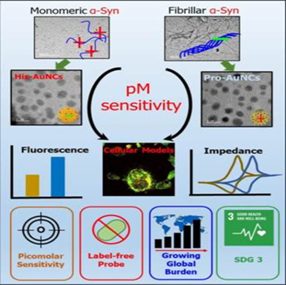
Key Protein – ?-synuclein:
- In PD, ?-synuclein undergoes misfolding and aggregation.
- Normal form is harmless (monomeric), while aggregated form (amyloid) is toxic and damages brain cells.
Nanotechnology Application – Gold Nanoclusters (AuNCs):
- Ultra-small fluorescent particles (few nanometers wide).
- Amino acid–capped nanoclusters (Proline-coated ? normal protein; Histidine-coated ? toxic protein aggregates).
- Used to distinguish between physiological and pathological protein conformers.
Techniques Used:
- UV-Vis spectroscopy, fluorescence imaging, TEM, XPS.
- Gel electrophoresis, fluorescence quenching, cyclic voltammetry, impedance spectroscopy.
- Tested in SH-SY5Y human neuroblastoma cells to validate biosafety and effectiveness.
Institutional Framework:
- Research carried out at Institute of Nano Science and Technology (INST), Mohali, under the Department of Science and Technology (DST).
- Collaboration with CSIR-Institute of Microbial Technology (IMTECH), Chandigarh for protein biochemistry and cell-based assays.
Significance:
- Provides a label-free, low-cost, clinically adaptable biosensor for early detection of PD.
- Potential extension to other protein-misfolding diseases like Alzheimer’s.
- Supports India’s focus on affordable healthcare, nanotechnology, and biotechnology innovation.


Prelims Articles
Context:
ISRO successfully conducted its first Integrated Air Drop Test (IADT-1) to validate the parachute-based deceleration system of the Gaganyaan crew module.
About Gaganyaan Mission
-
- India’s maiden human spaceflight programme, implemented by ISRO.
- Objective: Send astronauts to Low Earth Orbit (LEO) (~400 km).
- Launch Vehicle: Human-rated LVM3 (HLVM3).
- Agencies Involved: ISRO (lead), DRDO (safety systems), Indian Air Force (lift and release), Indian Navy and Coast Guard (recovery operations).
Integrated Air Drop Test (IADT-1)
-
- Purpose: To test parachute-based deceleration and splashdown safety of crew module.
- Method: A 8-tonne dummy crew capsule was dropped from a Chinook helicopter at ~3 km altitude.
- Result: Sequential parachute deployment successful; touchdown velocity ~8 m/s, matching design expectations.
- Importance: Simulates the final stages of astronaut return to Earth.
Other Safety Validation Tests
- Crew Escape System (CES): Demonstrates crew ejection in case of launch failure.
- TV-D1 (October 2023): First successful abort test.
- TV-D2 (upcoming): Complex abort scenario with thrusters + parachutes.
- Uncrewed Gaganyaan-1 (G1): Will carry humanoid robot Vyommitra to test life support and operations.
Critical Subsystems Under Development
- Environmental Control and Life Support System (ECLSS): Oxygen, waste, fire safety, temperature regulation.
- Integrated Vehicle Health Management System (IVHMS): Autonomous fault detection and abort actions.
- Human-rating of LVM3: Strengthened design, redundancies, reliability upgrades.
- Indigenisation: Escape motors, composites, specialised materials (as imports restricted).
Long-term Goals of India’s Human Spaceflight Programme
- Establishment of BharatiyaAntariksh Station (BAS) by 2035.
- Indian crewed lunar landing by 2040.
- Development of in-orbit docking technology (SpaDeX mission 2025 success).
- H1 (first human flight) scheduled for 2027


Prelims Articles
Context:
India will host the FIDE World Cup 2025, returning to Indian soil after more than two decades.
About FIDE:
- The International Chess Federation (FIDE), founded in 1924 in Paris and headquartered in Lausanne, Switzerland, is the governing body for international chess competitions. India is a member nation.
FIDE World Cup:
- It is a biennial chess tournament organized by FIDE. It serves as a qualifying event for the FIDE Candidates Tournament, which ultimately decides the challenger for the World Chess Championship.
India and Chess:
- India is considered the birthplace of chess (ancient game Chaturanga). Over recent decades, it has emerged as a global hub for chess talent. Legendary Grandmaster Viswanathan Anand and the rise of young prodigies like R Praggnanandhaa, Gukesh D, and Nihal Sarin have strengthened India’s position.
Significance of Hosting:
- Hosting the FIDE World Cup after more than 20 years underscores India’s growing stature in international sports diplomacy and soft power. It will also popularize chess among Indian youth and strengthen India’s cultural and intellectual heritage on the global stage


Prelims Articles
Context:
From 2025, Ayurveda Day will be observed annually on 23 September with the theme “Ayurveda for People & Planet”.
Institutionalization of Ayurveda Day
- Since inception in 2016, Ayurveda Day was observed on Dhanvantari Jayanti (Dhanteras).
- From 2025 onwards, Ayurveda Day will be celebrated every year on 23 September (as per Gazette Notification, March 2025).
- Provides a fixed global calendar identity, ensuring wider international participation.
Theme 2025
- “Ayurveda for People & Planet”.
- Emphasizes Ayurveda’s holistic philosophy—individual health linked with environmental sustainability.
- Reflects India’s effort to mainstream Ayurveda in addressing lifestyle disorders, stress, and climate-related health challenges.
Global Expansion of Ayurveda
- Ayurveda Day has evolved into a global movement with participation in around 150 countries in 2024.
- Strengthens India’s role in traditional medicine diplomacy and soft power projection.
Institutional Support
- Ministry of Ayush coordinates global programmes.
- In 2024 (9th Ayurveda Day), PM inaugurated Phase II of All India Institute of Ayurveda (AIIA), launched 4 Centres of Excellence, and introduced “Desh Ka Prakriti Parikshan Abhiyan”, worth about ?12,850 crore in health initiatives.

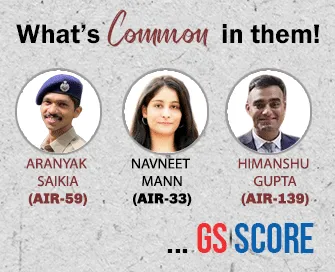
Editorials
Context:
Prime Minister Narendra Modi’s Asian tour, including a bilateral visit to Tokyo and participation in the Shanghai Cooperation Organisation (SCO) Summit in Tianjin, highlights India’s diplomatic challenges and opportunities in Asia.
Strategic Challenges in Asia
- US-China Tensions: Rising strains in India’s ties with the US complicate diplomacy, as Washington’s disputes with Beijing influence India’s strategic calculus.
- Trade Dependence on China: India’s imports from China reached $118 billion in 2024, creating a structural imbalance despite policy pushes for “Make in India.”
- Russia-China Nexus: Moscow’s deepening alignment with Beijing after the Ukraine war limits India’s flexibility and increases dependency risks.
India’s Position in the SCO
- Regional Participation: Almost all South Asian neighbours (except Dhaka and Thimphu) are present in Tianjin, with China actively backing Dhaka’s inclusion.
- China’s Expanding Role: By promoting trade, digital links, and regional dialogues, Beijing seeks to draw the Subcontinent into its orbit through the SCO.
- Pakistan Factor: Beijing’s engagement with Islamabad, coupled with Pakistan’s active role in the SCO, places India in a diplomatically constrained environment.
Opportunities with Japan and the US
- Japan Partnership: Modi’s Tokyo visit aims to deepen strategic and economic cooperation, highlighting shared interests in technology, defence, and regional security.
- US Strategic Alignment: Washington signals renewed focus on South Asia, appointing a Special Envoy and pressing India to act as a counterweight to China.
- Balancing Diplomacy: India must leverage ties with Japan and the US while carefully managing China and Russia, ensuring regional stability and advancing its economic interests.
Practice Question
“India’s Asian diplomacy reflects a balancing act between cooperation with China-led platforms like the SCO and deepening strategic partnerships with Japan and the US. Critically evaluate India’s options in reconciling these competing engagements.” (250 words)


Editorials
Context:
The U.S. President’s proposal of 50% tariffs on $40 billion worth of Indian exports threatens India’s economy and highlights the urgency of women’s economic participation.
Tariff Shock and Economic Risks
- Export Vulnerability: U.S. constitutes 18% of India’s exports; new tariffs could cause 30–35% cost disadvantage compared to Vietnam.
- Sectoral Impact: Labour-intensive industries like textiles, gems, leather, and footwear employing nearly 50 million workers face up to 50% export decline.
- Gendered Consequences: These sectors disproportionately employ women, intensifying the challenge of India’s already low female labour force participation rate (37–41.7%).
Demographic Dividend and Missed Potential
- Demographic Window: India’s demographic dividend lasts until 2045; failure to integrate women risks wasting this opportunity.
- FLFPR and Growth: IMF estimates closing the gender gap can raise India’s GDP by 27% in the long term, but systemic barriers limit participation.
- Comparative Lessons: U.S., China, Japan, and the Netherlands show how legal protections, childcare, and flexible jobs raised female participation and national growth.
Policy Pathways and Case Studies
- Mobility and Access: Karnataka’s Shakti scheme boosted female bus ridership by 40%, enhancing work and education opportunities.
- Gig Economy Formalisation: Platforms like Urban Company enable women to earn ?18,000–?25,000 with safety nets such as insurance and maternity benefits.
- Public Employment Models: Rajasthan’s Indira Gandhi Urban Employment Guarantee Scheme created over 4 crore person-days, with 65% jobs for women in flexible neighbourhood-based roles.
Practice Question
“India’s economic resilience amid global trade disruptions depends significantly on enhancing female labour force participation. Discuss the structural reforms and policy innovations required to integrate women into the workforce.” (250 words)


Editorials
Context:
PM Jan Dhan Yojana (PMJDY), launched in 2014, has completed 11 years and emerged as the world’s largest financial inclusion programme with nearly universal account ownership in India.
Achievements of PMJDY
- Universal Account Access: Account ownership rose from 59% of households in 2014 to almost 100% today, with 56% of PMJDY accounts belonging to women.
- Rapid Account Growth: Over 56.2 crore accounts have been opened, with total deposits reaching ?2.68 lakh crore in 2024, a 17-fold increase since 2015.
- Digital Penetration: More than 38.7 crore RuPay cards issued; PMJDY accounts facilitate direct benefit transfers (DBT) and digital transactions.
Social and Economic Impact
- Financial Security for Poor: Schemes like PMJJBY and PMSBY linked to Jan Dhan accounts provide low-cost insurance and security for the unorganised sector.
- Women Empowerment: With over half of the accounts owned by women, PMJDY has become a strong instrument of gender-inclusive financial access.
- Crisis Support Role: During demonetisation and COVID-19, PMJDY accounts served as channels for rapid relief distribution and ensured transparency.
Future Potential and Challenges
- Expansion of Ecosystem: 99.9% of inhabited villages now have a banking outlet, strengthening access to credit, insurance, and investment products.
- Technological Innovations: Integration of AI and digital tools can enhance financial literacy, promote paperless services, and widen outreach.
- Sustaining Inclusion: The focus must shift towards account usage, financial literacy, micro-insurance, and long-term savings to ensure durable benefits.
Practice Question
“PM Jan Dhan Yojana has been a milestone in India’s financial inclusion journey, but sustaining account usage and ensuring deeper financial empowerment remain challenges. Discuss.” (250 words)



